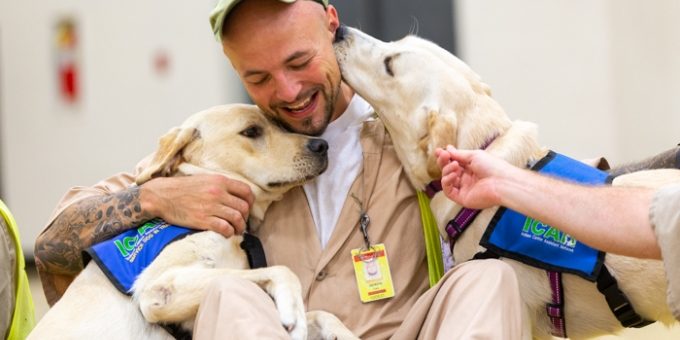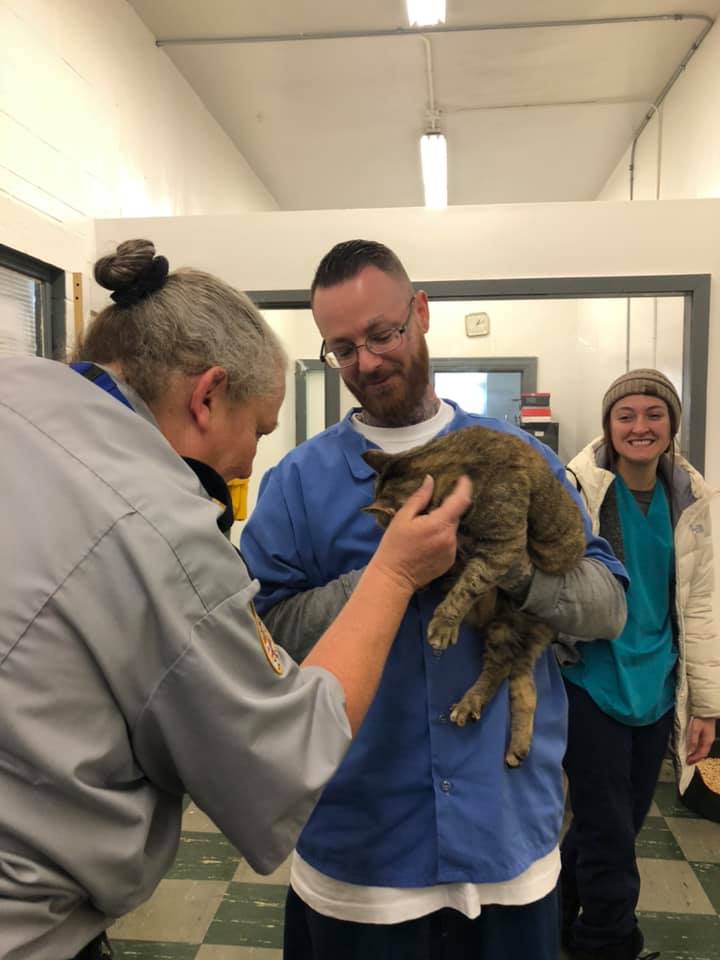
(UNDATED) – When you think about your tax dollars at work, you probably don’t think about the Indiana Department of Correction (DOC) beyond the facilities they manage.
For June’s Money Monday, the Department of Revenue explores several of the great programs DOC does to help offenders re-enter society with additional skills and training to help them succeed.
As the largest state agency in Indiana, DOC employs more than 6,400 Hoosiers, supervises almost 10,000 parolees in communities across the state, and is responsible for the safety and security of more than 25,000 adults and 450 juveniles inside the state’s correctional facilities.
There are many programs DOC does you might not be aware of:
Helping Animals
Did you know DOC has a program geared toward helping animals? From the Indiana Canine Assistance Network (ICAN) to the Cat Sanctuary at Pendleton, both dogs and cats are getting help from offenders who are giving back.

Let’s start with ICAN. ICAN provides children and adults who have disabilities to have more independence by pairing them with a service dog. These service dogs are trained by carefully screened adult offenders located in DOC facilities. Not only do dogs get the training needed, but the handlers gain professional and life skills to help with successful re-entry into their communities.
The Cat Sanctuary at Pendleton Correctional Facility allows offenders to foster and care for shelter animals as they await adoption. With nearly two dozen cats in the sanctuary, offenders bond with the animals and practice time management, conflict resolution, empathy, patience, and problem-solving to accommodate each cat’s needs.

Giving Back to Local Communities
Offenders often find ways to raise money for local charities to give back to the community, including donating handmade quilts to the armed forces or filling sandbags to keep local communities from flooding. In Madison, offenders crocheted more than 100 hats and gloves to give to the local area schools to keep kids warm in the winter. The Wabash Valley Facility made 35 care packages to send to troops overseas. Rockville offenders took part in a two-hour walk to raise $7,000 for Riley Children’s Hospital. Not only do these activities help the community, but it gives offenders a positive connection to those outside the facility.
Making Products and Providing Services
Indiana Correction Industries (ICI), formerly known as PEN products, manufactures goods and provides services through offender labor. ICI makes a range of products from hand sanitizer, furniture to vehicle wraps. Below are a few more examples:
- Bike racks
- Bunk beds
- Classroom furniture
- Offender uniforms and jumpsuits
- Printing and design services
- Signs
- Tables
Participating offenders develop a strong worth ethic and learn valuable social skills to obtain lasting employment in today’s challenging workforce and leads to a lower recidivism rate.
Saving Taxpayer Dollars
Most Hoosiers are not aware of how the DOC helps save tax dollars. The Offender Work Crew Program out of Edinburg is just one example of how DOC is doing just that. The crew is assigned to cleaning up Indiana’s state parks with routine trash pick-up, cleaning facilities, and landscape maintenance. Additionally, these crews help with roadwork to maintain and improve Indiana’s roadways, which is a significant saving over hiring additional employees.
Rejoining the Workforce
Did you know the State of Indiana spends roughly $20,000 per year to incarcerate one offender? Fortunately, more than 12,000 offenders are released from Indiana prisons each year, but when the individual remains unemployed their chances of returning to the system increases by 60%. However, some Hoosier employers are historically reluctant to hire clients with a criminal history. The Hoosier Initiative for Re-Entry (HIRE) was created to help current and recently-released offenders successfully reintegrate into society by creating career paths to improve their lives in a long-term way through work—specifically, HIRE works with local businesses to place individuals who have completed certification training into employment. Since its conception in 2012, HIRE has had an 85% success rate.
Other DOC Programs:
In 2019, 4,642 certifications were earned by 2,617 offenders within various other vocational programs DOC offers to offenders, including:
- Basic electricity
- Carpentry
- Culinary arts
- Hairdressing and hairstyling
- Web programming
- Welding
To learn more about DOC, check out their website at www.in.gov/idoc.
Information by Michelle Cain of Indiana Department of Revenue



